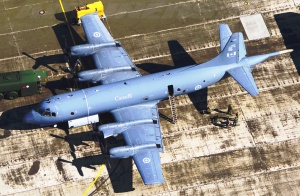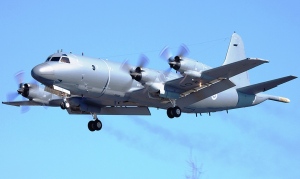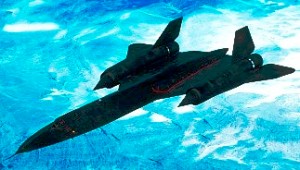 Originally designed for anti-submarine warfare (ASW), the Lockheed CP-140 or also known as "Aurora", is an aircraft based on the Lockheed P-3 Orion air-frame combined with the avionics of the S-3 Viking. This aircraft is a four-engine turboprop, long-range maritime patrol aircraft built by Lockheed Corporation for the Royal Canadian Air Force. According to the Greek mythology, Aurora is the Greek goddess who restored Orion's eyesight. Aurora also refers to the Aurora Borealis which is the "northern lights" that are prominent over northern Canada and the Arctic Ocean.
Originally designed for anti-submarine warfare (ASW), the Lockheed CP-140 or also known as "Aurora", is an aircraft based on the Lockheed P-3 Orion air-frame combined with the avionics of the S-3 Viking. This aircraft is a four-engine turboprop, long-range maritime patrol aircraft built by Lockheed Corporation for the Royal Canadian Air Force. According to the Greek mythology, Aurora is the Greek goddess who restored Orion's eyesight. Aurora also refers to the Aurora Borealis which is the "northern lights" that are prominent over northern Canada and the Arctic Ocean.
SPECIFICATIONS:
Armament: Sonobuoys, Forward-looking Infra-Red Camera (FLIR), magnetic anomaly detector, electronic support measures, fixed 70mm camera, hand-held camera, night vision goggles, gyrostabilized binoculars Mk 46 Mod V torpedoes, signal chargers, smoke makers, illumination flares, and may be fitted with air-to-surface missiles.
Engines: Four Alison T-56-A-14-LFE turboprop engines
Maximum speed: 466 mph
 Range: 5,758 miles
Range: 5,758 miles
Service ceiling: 35,000 ft.
Span: 99 ft. 8 in.
Length: 116 ft. 10 in.
Height: 33 ft. 9 in.
Weight: 142,000 lbs. loaded
Crew: 2 Pilots, 1 Flight Engineer, 4 Navigators, 4 AESOPs
Serial number: 140101-140118
Armament: Sonobuoys, Forward-looking Infra-Red Camera (FLIR), magnetic anomaly detector, electronic support measures, fixed 70mm camera, hand-held camera, night vision goggles, gyrostabilized binoculars Mk 46 Mod V torpedoes, signal chargers, smoke makers, illumination flares, and may be fitted with air-to-surface missiles.
Engines: Four Alison T-56-A-14-LFE turboprop engines
Maximum speed: 466 mph
 Range: 5,758 miles
Range: 5,758 milesService ceiling: 35,000 ft.
Span: 99 ft. 8 in.
Length: 116 ft. 10 in.
Height: 33 ft. 9 in.
Weight: 142,000 lbs. loaded
Crew: 2 Pilots, 1 Flight Engineer, 4 Navigators, 4 AESOPs
Serial number: 140101-140118
In the early 1980's, in replacing the CP-107 Argus, the Lockheed CP-140 Aurora was acquired. This is to further support Canada's anti-submarine warfare mission obligations for the northwest Atlantic sector which is under NATO. Since the end of the Cold War, Aurora had been used primarily by providing an all-weather mission surveillance platform in coastal surveillance and sovereignty patrols. Before that, the short deployments to Adak - Alaska, Kaneohe Bay - Hawaii, Keflavik - Iceland, St Mawgan and Kinloss - the United Kingdom and Andoya - Norway were the norm.
The Lockheed CP-140 Aurora is frequently used to search out illegal fishing, immigration, drug trafficking and polluting along the coastline. It is also used to search for violations of Canadian territorial sovereignty above and below the ocean’s surface. With its air-droppable survival pods, it can perform search and rescue duties or also known as SAR. Two Auroras flew missions over flood-ravaged southern Manitoba during the Red River Flood of 1997. The operation is known as Operation Assistance. Auroras were also employed in Operation Apollo in the Persian Gulf from late 2001 to mid-2003. In the international campaign against terrorism, 500 air patrol sorties flew as part of Canada’s role. Patrols of the Canadian Arctic continue to take advantage of the airframe's unique abilities through all this.

